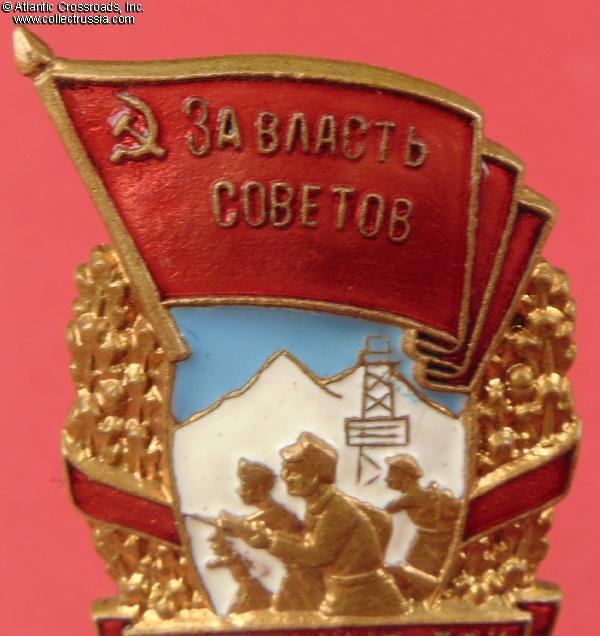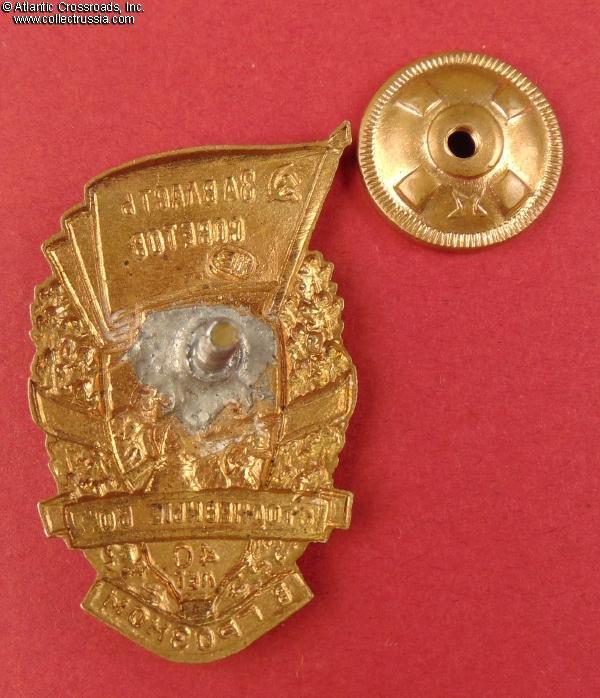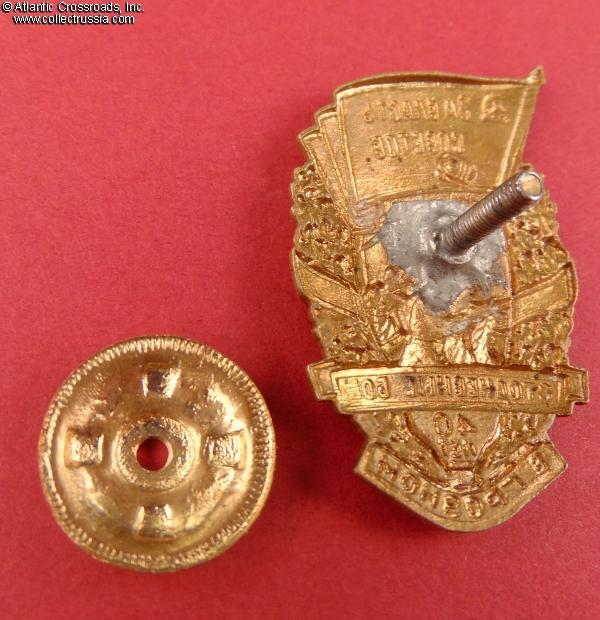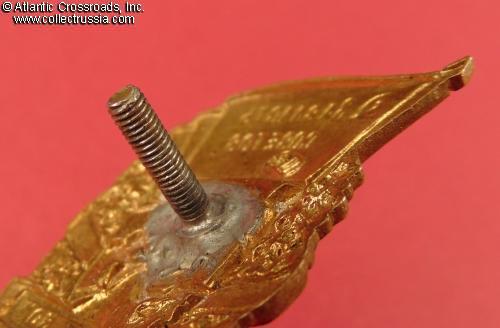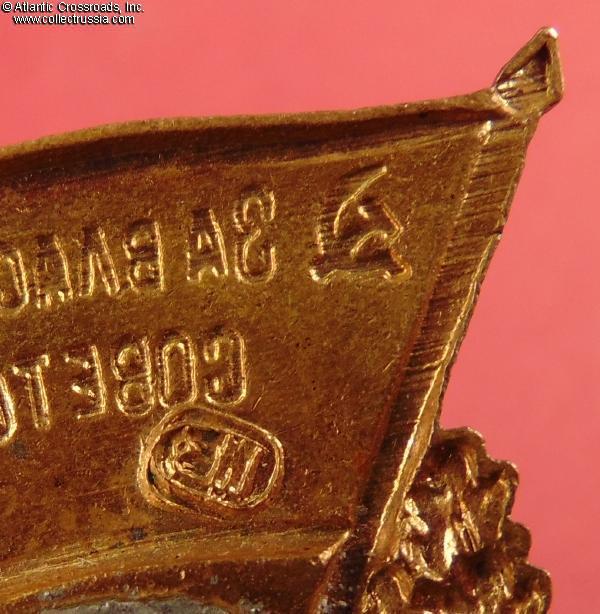
Badge in Commemoration of the 40th Anniversary of the Hundred Days Battle in Grozny (in 1918), 1958 issue.
Brass, enamels, lacquer; 45.6 x 27.5 mm. The artwork includes armed workers (Bolshevik militia) defending an oil derrick, with snow-covered mountains in the background. The red banner shows the hammer & sickle emblem and a Bolshevik motto "For the Power of the Soviets!" The inscription on the red scroll is "40 Years of the One Hundred Day Fights in Grozny". The reverse has the raised manufacturer's logo of the Scherbinsky Factory.
In very fine to excellent condition. The obverse is perfect. The enamel is pristine, showing a beautiful luster and having no wear visible even
Brass, enamels, lacquer; 45.6 x 27.5 mm. The artwork includes armed workers (Bolshevik militia) defending an oil derrick, with snow-covered mountains in the background. The red banner shows the hammer & sickle emblem and a Bolshevik motto "For the Power of the Soviets!" The inscription on the red scroll is "40 Years of the One Hundred Day Fights in Grozny". The reverse has the raised manufacturer's logo of the Scherbinsky Factory.
In very fine to excellent condition. The obverse is perfect. The enamel is pristine, showing a beautiful luster and having no wear visible even under a 10x magnification. The gilt finish is clearly visible in recessed areas of the artwork and wreath, as well as on the reverse of the badge. The pin attachment has been replaced with a custom-made screw post, probably by the original owner of the badge (this was often done by military men to more firmly affix the badge on a military uniform tunic.)
The badge was issued to commemorate the events of the Russian Civil War in the Caucasus. Soon after the Bolshevik takeover in 1917, the Caucasus became an area of armed struggle between the communists, local nationalists, Germans, British, and those who supported the old regime in one form or another. Grozny, the capital city of the mountainous region of Chechnya in North Caucasus, was a center of attention because of the region's importance as one of the principal oil producing areas of Russia. In 1918, the city was besieged by the Terek Cossacks incensed by the earlier Bolshevik attempts to disarm and subjugate them. Grozny was fiercely defended by the militia loyal to the Bolshevik government in Moscow, supported by some of the local Chechens, about 2000 men in total. The communist-led garrison was able to repel the initial assault and the city then came under siege. In the end, the defenders were rescued by a 7000 men strong Soviet relief force led by Ordzhonikidze and Levandovsky which broke the blockade. The news of the Bolshevik victory was received with great enthusiasm by Lenin's government, and the city of Grozny was subsequently awarded with the Order of the Red Banner and Honorary Revolutionary Red Banner.
The siege that had lasted 100 days was a decisive victory for the communists, but a short-lived one: Grozny and almost the entire territory of Caucasus that was once a part of the Russian Empire would be captured by the anti-Bolshevik White Forces early next year and would remain in their hold for much of the Civil War. The Soviets regained control only much later, after the failure of the attempt of the Armed Forces of the South of Russia under General Denikin to capture Moscow and the resulting headlong retreat of the White armies during 1920.
It is interesting to note that later, during WW2, the local Chechen population was suspected of collaborating with the Germans when the Nazi offensive reached Caucasus in 1942. In 1944, they were summarily deported to Central Asia on Stalin's orders, and were only allowed to return starting around 1957, a few years after Stalin's death. In 1958, the area recently devoid of Chechens was becoming their homeland once again, and the fact that the badge was issued could be an indication that the new leadership in the Kremlin was trying to mend the relationship.
After the breakup of the Soviet Union, Grozny gained notoriety once again as a hotbed of Muslim Chechen insurgency, and it came under siege by Russian forces on two separate occasions.
The 1958 badge was apparently awarded to the surviving Bolsheviks who participated in the defense of Grozny, other veterans of the Russian
Civil War who lived in the Caucasus at the time of the anniversary, and the leadership of the Chechen Autonomous Soviet republic. A very
interesting piece with many historical angles!
$60.00 Add to cart


